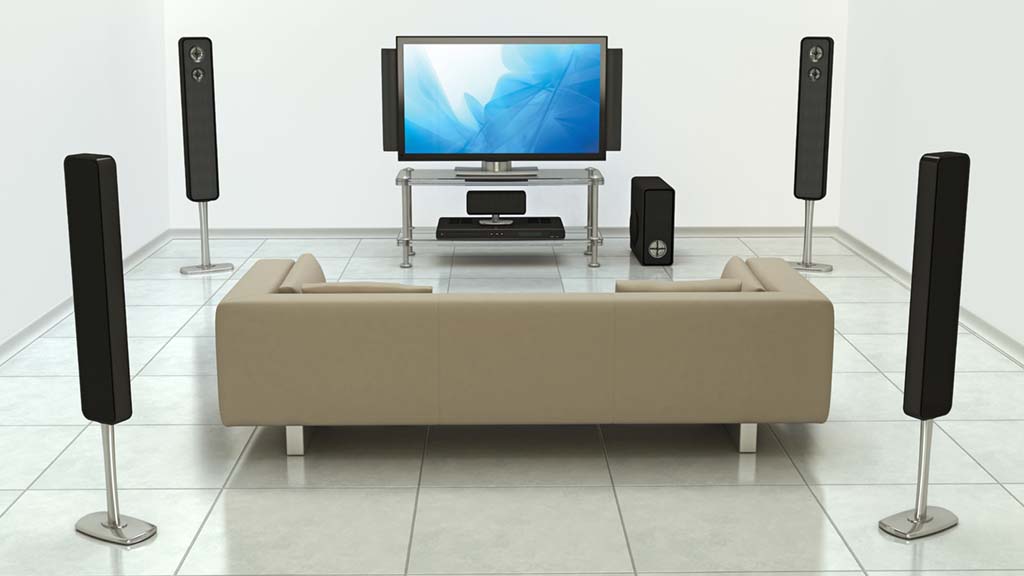A Full Immersion Into Audio’s Future: Immersive Sound
Enhanced sound will stand out no matter which device a consumer uses

Immersive sound is the final journey to the complete auditory experience. Stereo began that journey with the ability to reproduce sounds that would align more with our hearing, but at the onset, audio practitioners seemed to define stereo as two channels of monophonic sound.
I will always remember my first records that separated the instruments into one channel or the other—this did not work for television. When you saw music on television, the instruments were not separated into left or right, but more of a mix in the middle. This may have been because early mixing decks did not have panorama controls.
The Problem With Surround Sound
Once audio technicians ventured into two channels of sound, the problems began immediately with phasing and even to the extreme of phase cancellation. With surround sound, this became even more problematic. Stereo and surround sound cracked the door open for the complete auditory experience, while the next step, immersive sound, blew the door off its hinges with creative possibilities while solving many technical issues.
For the audio producer/broadcaster, immersive sound adds an upper layer of sound over the basic surround-sound bottom layer. Technically, when you propagate the upper channels with sound, you have immersive sound.
Immersive sound is easy to produce—begin with atmospheric enhancements so the listener further believes the “being there” experience. The ambience at sports venues is fairly homogenous and omnidirectional, particularly in the upper stratus, so to capture a stable immersive sound base will require a minimum of four microphones spaced some distance apart and some distance from the source.
There is much discussion of the separation of “spaced pairs” of microphones. I happen to like a widely spaced group of microphones because I like a broad sense of dimension—my experience has been that precise placement is not absolute in sports.
With immersive sound, you do not want to over-mix the ambiance/atmosphere into the lower channel—use all of your channels to separate your sound elements and be careful not to drown out the commentators or other voices with ambiance and atmosphere.
Evolving Sounds of the Game
Immersive sound will evolve as the practitioners and producers gain knowledge and experience. There are sports that are covered with the athlete in full frame from head to toe, which lends itself to specific sounds in the upper front channels. For example with basketball, the net microphones can be placed in the upper front channels, giving a natural soundscape, because the listener does expect that the sound of the basket and net are above their head.
It is often assumed that if you cannot properly hear the sound field, you cannot properly control the sound field. This is partially true, but consider that somewhere in a quality-control or transmission room the entire immersive sound field should be verified, but for simple atmospheric enhancement visual metering is a valuable asset to the mixer.
Critical listening of a transmission mix may dictate your level of sophistication in the immersive mix. For example, basic atmospheric enhancements can be metered and monitored in a QC listening room with a soundbar to determine proper levels of sound and balance to the immersive sound encoder.
In a space without overhead speakers, you can hang a couple of overhead speakers or—depending on budgets and time—a temporary immersive mix area can be assembled for the event. Specifically, any event where “flight pack” equipment is set up, you should be able to configure speakers to accommodate Immersive Sound production.
Digital Advances
Immersive sound was not possible before digitized audio. Additionally, digitizing the audio and video signal solved the problem of transporting the broadcast signal to the consumer. The introduction of ATSC 3.0 audio standards for immersive sound with Dolby Atmos and its competitor, Fraunhofer’s MPEG-H, along with the proliferation of modestly priced encoding “black boxes” like the Liner Acoustics brands, has allowed for immersive sound to be encoded on virtually every electronic entertainment production.
Dolby Atmos and MPEG-H decode immersive sound into the home over speakers, soundbars and ear devices and either codec is capable of decoding virtually any listening configuration—not only immersive but surround and stereo, solving the decades-long concern over “the down mix.”
Entertainment formats and technologies are consumer-driven—no matter how cool the industry thinks a format is, the consumer may think otherwise. The problem for multichannel sound has always been delivering the experience to the home. The early analog “matrixes” from Dolby sounded mediocre at best, but opened ears to the possibilities of the enhanced audio experience.
Fast-forward to today and soundbars with audio decoders are the “go to” audio device for the home consumer. The consumer/listener can tell the difference with even the most basic of sound reproduction devices, and enhanced sound clearly stands out with virtually all content—drama, music, variety and sports. Finally, soundbars are significantly easier to install and set up; ask my mom.
My advice has always been, it is never going to be perfect! It only needs to be entertaining and immersive sound is entertaining.
Get the TV Tech Newsletter
The professional video industry's #1 source for news, trends and product and tech information. Sign up below.
Dennis Baxter has spent over 35 years in live broadcasting contributing to hundreds of live events including sound design for nine Olympic Games. He has earned multiple Emmy Awards and is the author of “A Practical Guide to Television Sound Engineering,” published in both English and Chinese. His current book about immersive sound practices and production will be available in 2022. He can be reached at dbaxter@dennisbaxtersound.com or at www.dennisbaxtersound.com.

